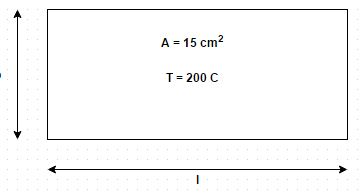Test: Laminar Flow - Chemical Engineering MCQ
10 Questions MCQ Test - Test: Laminar Flow
The Nusselt number is related to Reynolds number in laminar and turbulent flows respectively as
A hot plate of 15 cm2 area maintained at 200 degree celsius is exposed to still air at 30 degree Celsius temperature. When the smaller side of the plate is held vertical, convective heat transfer rate is 15 per cent higher than bigger side of the plate is held vertical. Find size of the plate. The appropriate correlation for the convection coefficient is

Nu = 0.60 (Gr Pr) 0.25
| 1 Crore+ students have signed up on EduRev. Have you? Download the App |
A horizontal heated plate at 200 degree Celsius and facing upwards has been placed in still air at 20 degree Celsius. If the plate measures 1.25 m by 1 m, make calculations for the heat loss by natural convection. The convective film coefficient for free convection is given by the following empirical relation
h = 0.32 (α) 0.25 W/m2 K
Where α is the mean film temperature in degrees kelvin
Air at atmospheric pressure and 20 degree Celsius flows with 6 m/s velocity through main trunck duct of air conditioning system. The duct is rectangular in cross-section and measures 40 cm by 80 cm. Determine heat loss per meter length of duct corresponding to unit temperature difference. The relevant thermos-physical properties of air are
v = 15 * 10 -6 m 2/s
α = 7.7 * 10 -2 m2/hr
k = 0.026 W/m degree
The local film coefficient for laminar flow past a flat plate may be obtained from the correlation
For a plate of length l, an average value of Nusselt number is given by

















